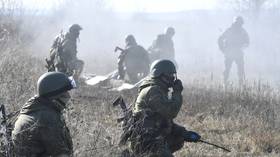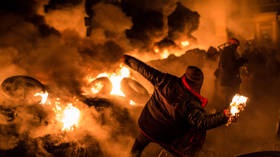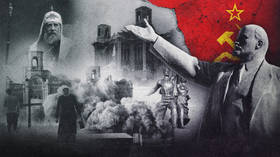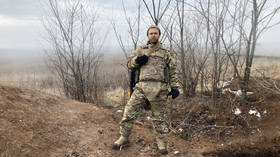No quiet on the Eastern front: How the US has worked to prevent Russia and Japan from putting a formal end to World War Two
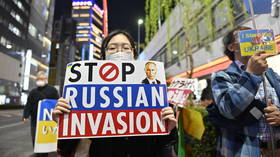
“Give back the Northern Territories! You’re illegally occupying our land!” Every year, on February 7, slogans like this blare out through loudspeakers opposite the Russian embassy in Japan. This is the day when Japan celebrates the so-called Northern Territories Day." This refers to what Russia calls the Southern Kurils — Iturup, Kunashir, Shikotan, and Habomai Islands, — which became part of the Soviet Union after World War 2.
In 2022, a protest staged by rightwing radicals began a day early and resulted in unrest. According to Russian diplomats, “a group of militant young men'' attempted to break into the embassy premises and fought with police securing the entrance. The next day, on February 7, Prime Minister Fumio Kishida addressed a national rally in Tokyo calling for the return of the Northern Territories.
This year has been no exception. Far-right activists again staged a rally outside the building, making a detour around the perimeter of the block in vans and using loudspeakers to shout their demands for the return of the islands.
In addition, for the first time since 2018, the phrase “illegal occupation” was included in the statement that is traditionally read out at the end of the annual ‘National Rally for the Return of the Northern Territories’.
Tokyo ties the Kuril Islands dispute with another issue that has been souring relations with Moscow for almost 78 years — the absence of a peace treaty between the two capitals after World War Two. On March 21, 2022, Russia exited the negotiation process with Japan, which had been gaining momentum since the end of the Cold War. The Russian Foreign Ministry stated it was impossible to hold such discussions with a state that “displays an openly unfriendly position and attempts to damage the interests of our country.” This came after Tokyo placed sanctions on Moscow.
The Southern Kuril Islands are a very valuable asset. The Catherine and Vries Straits are the only year-round ice-free links between the Sea of Okhotsk and the Pacific Ocean. Additionally, the Sea of Okhotsk can be considered an internal sea of the Russian Federation, thus preventing any other country from fishing or extracting mineral resources there without Moscow’s permission. The area around the Southern Kuril Islands boasts rich fishing grounds, where the USSR used to catch most of its Japanese pilchard and Pacific saury. Iturup has one of the world’s largest deposits of rhenium, a remarkably rare metal. A major underwater hydrocarbon deposit has been discovered off the coast of the Lesser Kuril Chain, with reserves in the Mid-Kuril Oil and Gas Basin estimated at 300 million tons.
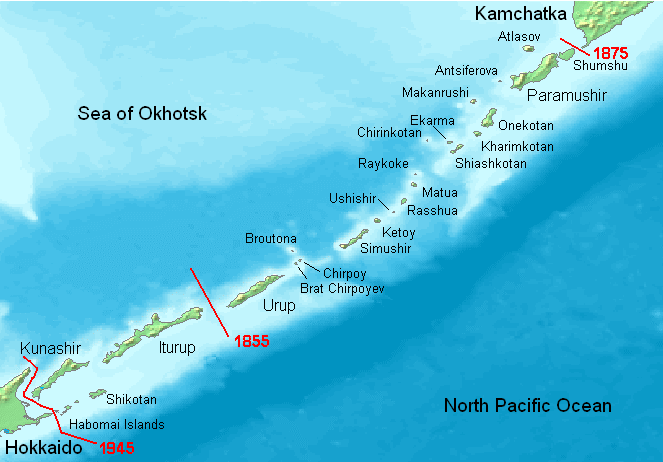
Pursuing sanctions and Kurils
What little hope there was to sign a peace treaty ended after Tokyo’s response to Russia’s military operation in Ukraine. Maria Zakharova, the Russian Foreign Ministry spokeswoman, has counted 15 packages of individual and sectoral sanctions imposed by Japan over this time. “Sometimes Japan was even overzealous, rushing new sanctions before its Western allies,” she added.
Any hypothetical resumption of talks can only happen after the whole crisis around Ukraine is resolved, Vladimir Nelidov, an associate professor of Eastern Studies at MGIMO, told RT.
While the [conflict] is ongoing, no talks and certainly no resolution are possible.
This issue is part of the bigger context of the relations between Russia and the West, which are currently involved in a confrontation,” he said.
Although located off Asia’s Pacific Coast, Japan coordinates its policies with its allies in the West.
Valery Kistanov, Head of the Center for Japanese Studies at the Russian Academy of Sciences’ Institute of China and Contemporary Asia, told RT:
“A peace treaty is very unlikely in the foreseeable future, I’m not even sure the next generations will live to see it. Relations with Japan are so bad now, a peace treaty is not on the table. Prime Minister Fumio Kishida is still talking about his willingness to keep negotiating, even though Japan is one of the global leaders in this whole anti-Russian business. I’m certain that this course will remain for decades or even centuries to come. Russia can’t abide by that.”
Meanwhile, Japan seems determined to continue maintaining sanctions pressure on Russia. In the latest package to date, it banned exports of vaccines, medical equipment, and robots and expanded sanctions against individuals. In response, Moscow put Japan on the list of unfriendly countries, suspended peace talks, and stopped joint economic activities on the Kuril Islands and visa-free travel for Japanese citizens to the Kuril Islands last year. In 2023, Russia followed up by refusing to hold annual talks with Japan over fishing near the islands under a 1998 treaty.
“Essentially, the only thing left is the energy bridge. Japan decided not to quit the Sakhalin-1 and Sakhalin-2 projects because it badly needs resources, and there is no alternative. Otherwise, Japan’s whole energy sector will go under,” Kistanov says. According to him, in all other respects, the countries’ relations have ground to a halt.
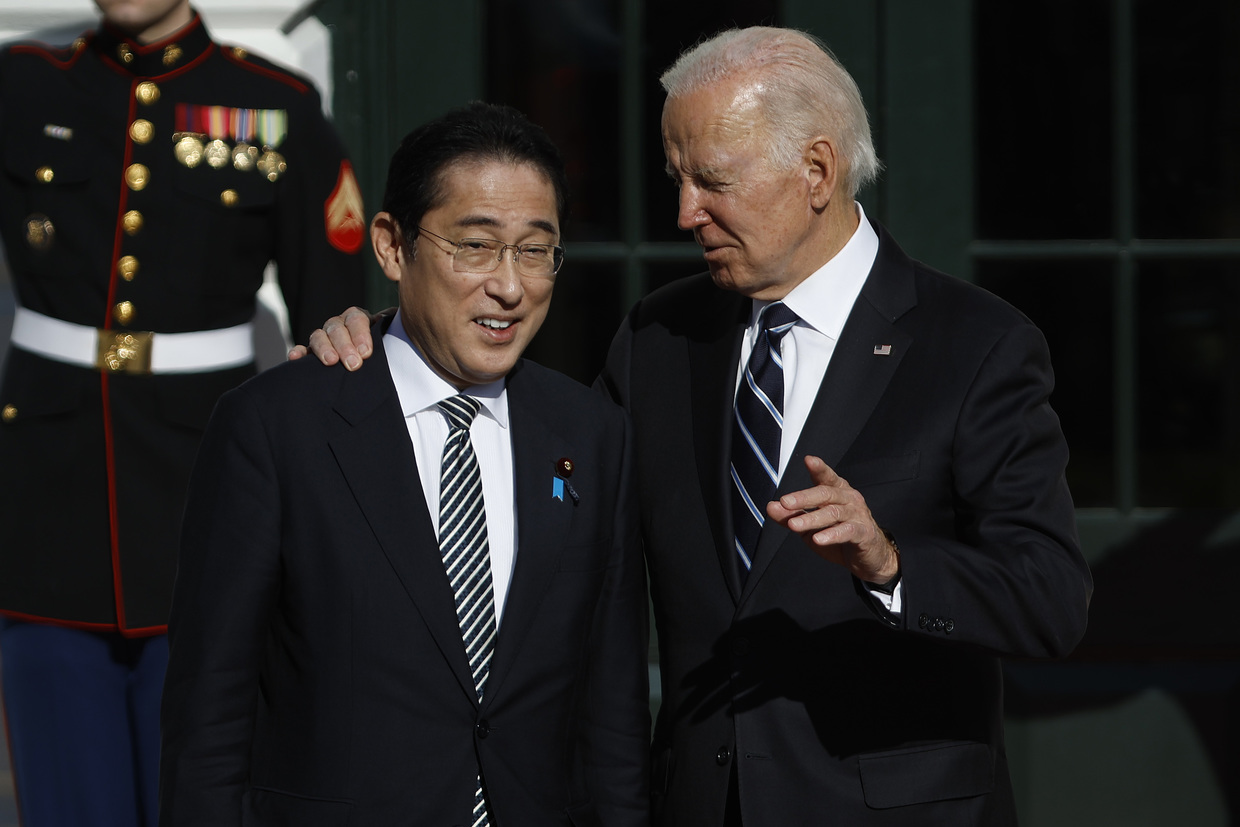
Approved by Churchill and Roosevelt
The agreement to give the Kuril Islands and the southern part of Sakhalin to the USSR was reached at the Yalta Conference attended by Joseph Stalin, Franklin Roosevelt, and Winston Churchill, in February 1945. The USSR, in its turn, pledged to join the war on the eastern front no later than two or three months after defeating Nazi Germany. The Southern Kurils were taken by Soviet forces in August-September 1945 and officially declared a part of the USSR a year later.
Japan confirmed that it renounced all claims to the Kuril Islands and South Sakhalin when it signed the Treaty of San Francisco, yet the text of the treaty drafted by the US and Great Britain neither said who it renounced those territories to, nor listed the names of the specific islands. Nevertheless, Tokyo gave up the ability to have a say in the future of the territories because all of the 48 treaty signatory states could then also lay claim to them.
Those provisions and the absence of the People’s Republic of China at the conference led the Soviet delegation to refuse to sign the Peace Treaty of San Francisco.
At first, it would appear that Japan was resigned to losing the territories. Kumao Nishimura, chief of the Treaty Bureau of the Japanese Foreign Ministry, described the loss of Kunashir and Iturup in the Japanese parliament as a fait accompli. However, Washington, which was waging a cold war against Moscow by that time, was bent on creating a territorial problem for its competitor. When discussing the treaty, the US Senate adopted a resolution which refused to accept any Soviet rights or claims to territories that belonged to Japan on December 7, 1941, including the Kuril Islands and even South Sakhalin.
Soon enough, Tokyo found new grounds to dispute the Southern Kurils.
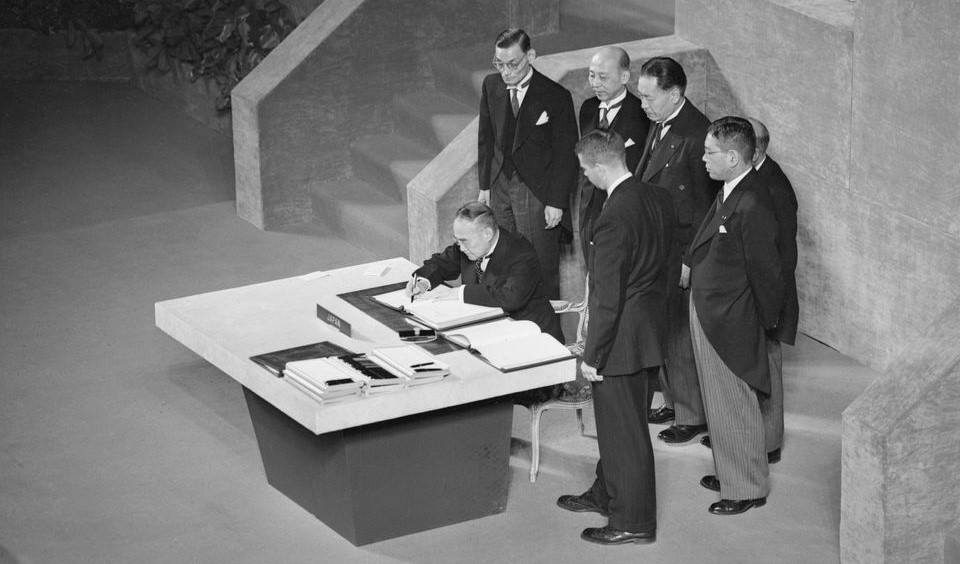
American Interference
Japan and the USSR began bilateral talks in 1956 hoping to reach a settlement. Tokyo’s demands were very ambitious at first – approving Japan’s UN membership and returning all the territories that were under Japan’s control in 1905 after the Russo-Japanese War, including Southern Sakhalin and all the Kuril Islands. The Soviet Union’s proposal included giving Tokyo control over Shikotan and the Habomai Islands if Japan agreed to give up all future territorial demands. Shunichi Matsumoto, who represented Japan at the talks, later shared that he “couldn’t believe what he heard” at first and “greatly rejoiced”.
After several rounds, Japan narrowed its demands down to the four South Kuril Islands. Their reasoning was that historically these four islands weren’t considered part of the Kurils, and therefore were not covered by the Treaty of San-Francisco. This was totally in line with US interests, since America didn’t want the agreement to be broken, but it also didn’t want the Soviet Union to have control over the two Kuril Islands. Washington benefited from Tokyo gaining control over all four islands, but the Soviet Union wouldn’t budge.
When Foreign Minister Mamoru Shigemitsu made his recommendation to the Japanese government to accept Moscow’s proposal and agree to the transfer of the two islands, the country’s leadership didn’t like it. Deputy Cabinet Secretary Takizo Matsumoto commented, “Moscow influenced him, and the Cabinet decided to send him to London, where he could meet with the [US] Secretary of State”.
At the talks in the UK capital, the US delegation threatened their colleagues from Tokyo, reminding them that they had no legal rights to the Kuril Islands and could not discuss their status with the USSR. On August 19, 1956, State Secretary John Dulles told Shigemitsu that if an agreement between Moscow and Tokyo were to be reached,
Japan might tell the Soviet Union of the tough line the United States was taking – that if the Soviet Union were to take all the Kurils, the United States might remain forever in Okinawa, and no Japanese Government could survive.”
This thinly veiled threat, disguised as “a friendly recommendation” effectively brought the Soviet-Japanese talks on the Kuril Islands to a halt.
The Ryukyu Islands were seized by US troops in 1945, with its largest island, Okinawa, remaining under American control until 1972. Today, the US maintains military bases there.
“Japan was under American pressure back in the 1950s, of course, and there is no consensus among historians to this day as to how that incident should be construed. But one thing we know for sure – the US was not interested in letting the Soviet Union normalize its relations with Japan, even if pro-US political forces in Japan were not opposed to restoring relations with the Soviets,” Vladimir Nelidov explained.
However, despite America’s best efforts, the USSR and Japan did sign a joint declaration in Moscow in 1956, formally putting an end to the state of war between the two countries. Moreover, the Soviet Union pledged to return the Habomai Islands and Shikotan to Japan, but only after a peace treaty was signed.
This generous gesture, however, was overshadowed by the US concluding a new treaty of mutual cooperation and security with Tokyo, giving it the right to establish and use military bases on Japanese soil, as well as deploy any number of troops there. This practically meant that any Soviet territories returned to Japanese jurisdiction could be used for American military bases. Therefore, the USSR chose to annul the Joint Declaration with Japan in 1960.
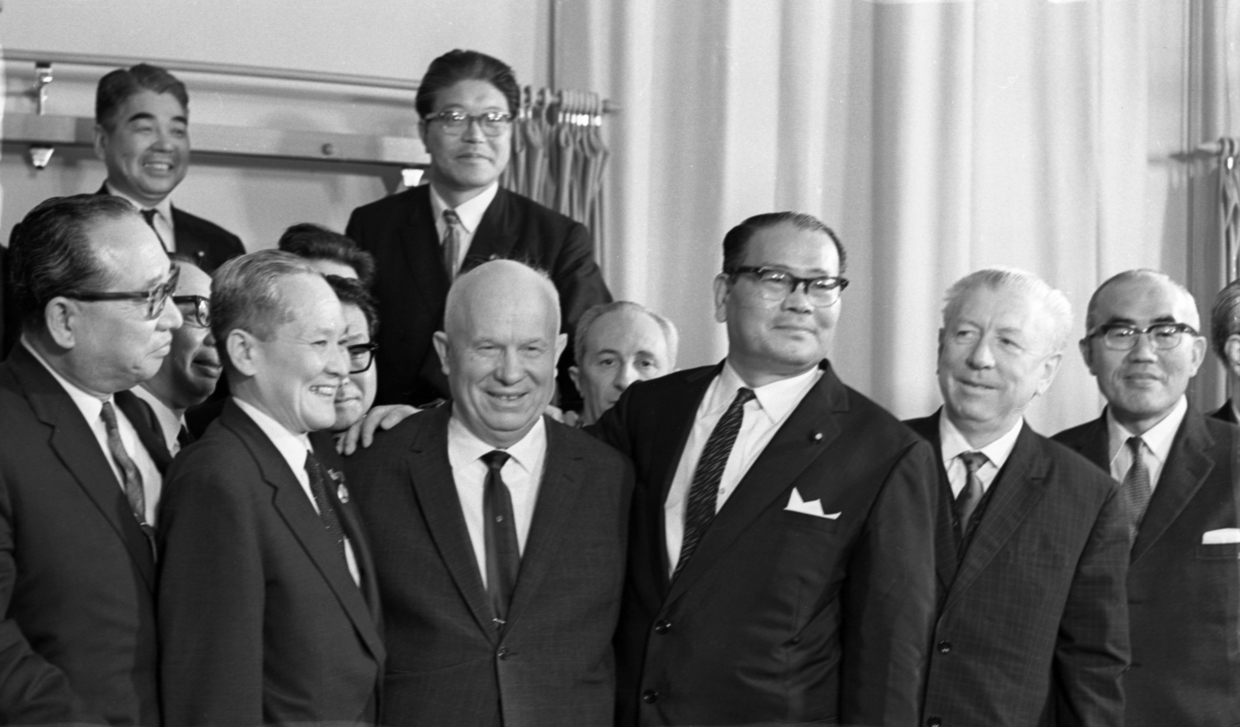
And again, the US interferes
In theory, that’s when Moscow could have ended the Kuril Islands dispute once and for all. Years later, in 2018, Prime Minister Shinzo Abe and President Putin agreed to resume talks based on the 1956 declaration. However, the Japanese leadership still interpreted the document, which only mentioned two of the four islands, in a very peculiar manner. Tokyo would never abandon its plans to get back all the four islands. Besides, it was not going to meet the requirement to recognize Russia’s sovereignty over the Kuril Islands.
In January 2023, during a press conference, Foreign Minister Sergey Lavrov recalled that period of active negotiating, led by Prime Minister Abe:
“At some point, the Japanese said they didn’t need the “big” peace treaty that Russia was offering… We had proposed signing a comprehensive peace treaty that would outline the principles of cooperation based on mutual respect, mutual interests, and neighborliness. The peace treaty was also supposed to cover investment, economic and humanitarian cooperation. All that was supposed to serve as a basis to define the border. The Japanese turned our proposal down saying they needed a document that’s strictly to the point, not a superfluous treaty full of rhetoric.”
According to Valery Kistanov, Putin sincerely believed that a peace treaty was a necessity – and that’s what the diplomatic thaw during Abe’s term was about. The leaders of Russia and Japan held a total of 27 meetings, but the United States got involved in that too.
According to Vladimir Nelidov, after 2014, President Obama “took a stand against Russia and Japan’s cooperation.” “For example, in 2016, Obama asked Prime Minister Abe to cancel his visit to Russia, but Abe didn’t listen.
The United States has been a negative influence on this relationship more often than not, and now especially so.”
Today, the US ignores the Treaty of San-Francisco. On the occasion of Japan’s Northern Territories Day in 2022, US Ambassador to Japan Rahm Emanuel openly said that Washington fully backs Tokyo.
Japan’s new government has made its position crystal clear and is sticking to its narrative of “four illegally occupied islands” that, in its opinion, Russia must return prior to signing a peace treaty.
Kistanov concludes, “As far as I see it, Russia doesn’t even need a peace treaty with Japan. We’ve lived for 70 years without one, and can keep on doing just that. We’ve always been accommodating and supportive of any effort to find a compromise, but Japan has never responded in the same way and I believe we shouldn’t expect it. Foreign Minister Lavrov recently quoted one expert on Japan who said, ‘should one day Japan decide that they are not getting back these four islands, it’ll join the club of Russia’s most fierce opponents.’ And that’s exactly what’s happening today.”
